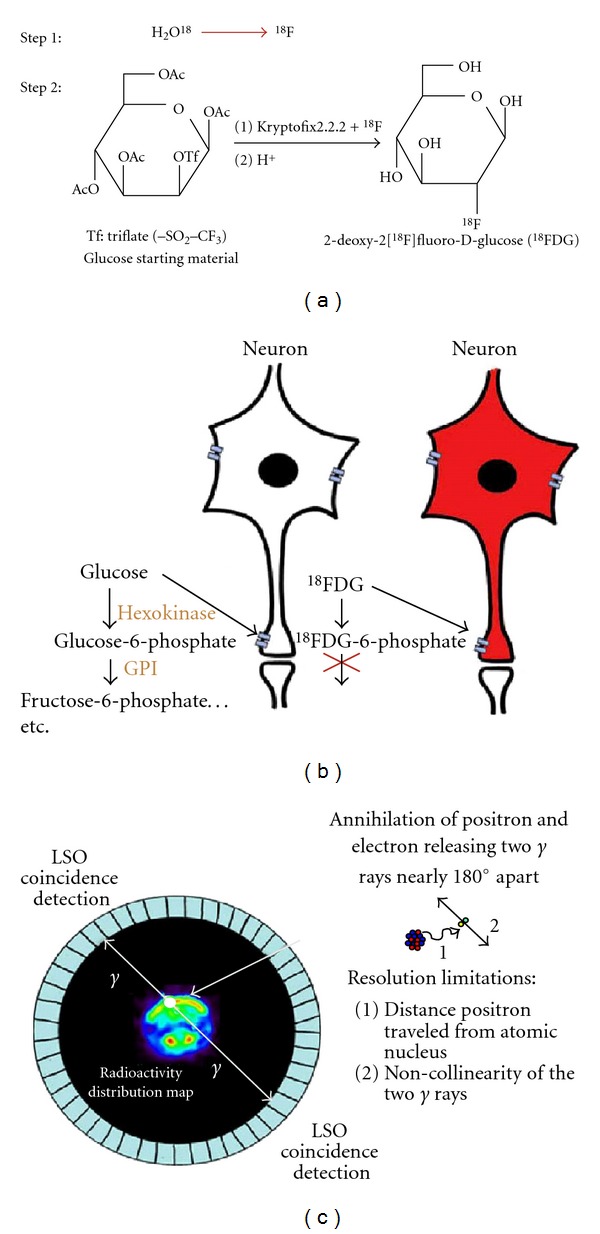Figure 1.

Schematic of 18FDG-PET imaging principles. (a) 18FDG production step 1: 18O enriched water (95%) is bombarded with protons in a cyclotron creating 18-flouride (18F) which is purified on a resin column and rinsed with potassium carbonate. Step 2: 18F is added with Kryptofix2.2.2 to the precursor glucose starting material and through a nucleophilic substitution, subsequent purification and removal of protecting groups, 18FDG is synthesized. (b) The radiotracer accumulates in tissue where it is transported into metabolically active cells, metabolized by hexokinase, and trapped as FDG-6-phosphate, as it is not a good substrate for further metabolism by glucose phosphate isomerase (GPI). (c) Representation of a mouse in the field of view of a small animal PET camera. When the 18F on a molecule of 18FDG undergoes beta decay, a proton turns into a neutron expelling a positron and neutrino from the atomic nucleus. The positron travels up to a few millimeters before it collides with an electron (inset). The energy of this annihilation expels 2 511 keV gamma rays (γ) approximately 180° apart from each other. These γ rays are detected simultaneously by a ring of LSO crystals that make up the PET camera.
